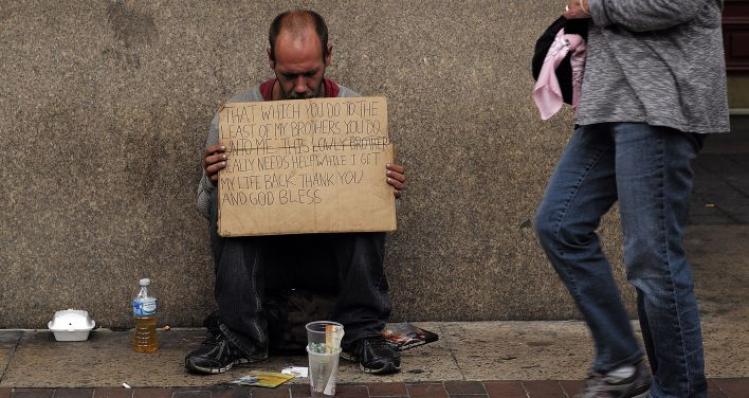
White working-class voters have been a key building block of the Republican coalition since the rise of the Reagan Democrats thirty-five years ago. You would think that the party's presidential candidates would want to respond to the heartbreaking crisis these Americans are facing.
Two Princeton economists, Angus Deaton and Anne Case, issued a study last week that should push what the writers Richard Sennett and Jonathan Cobb called the “hidden injuries of class” to the center of our political conversation. Deaton and Case found that the death rates for whites forty-five to fifty-four who never attended college increased by 134 deaths per 100,000 people between 1999 and 2014. They unearthed a startling rise in suicides as well as diseases related to alcohol and drugs.
Injustices relating to race remain a deep stain on our nation.
Middle-aged African-Americans overall still have a higher death rate (581 per 100,000) than whites (415), although the Hispanic death rate at middle age (262) is far lower.
But among the middle-aged, African-American and Hispanic death rates are falling while the rate for whites is going up. And make no mistake: This is a class story. Mortality rates dropped for the middle-aged college-educated; they rose by 22 percent among those with a high school education or less. On the matter of economic inequality, this study should be our fire bell in the night.
But the fire bell was heard only dimly at the two Republican debates in Milwaukee on Tuesday. Indeed, much time was consumed by a vigorous competition over tax proposals aimed at slashing the rates paid by the wealthiest Americans. The candidates were all about flat or flatter taxes or levies on consumption, which tend to disadvantage lower-income Americans who are suffering most in this economy. The GOP hopefuls often sounded like they were addressing a convention of Mercedes owners.
There were a few occasions when the working class made cameo appearances. To his credit (and I say this as someone who disagrees with him on almost everything), Rick Santorum has made blue-collar voters a centerpiece of his effort. “The middle of America is hollowing out,” the former Pennsylvania senator said in the undercard debate, adding: “This campaign has all been about two words for me — working families.” Santorum's proposals don't match the size of the problems he's addressing, but at least he's focusing on people to whom attention must be paid.
Marco Rubio's answers in the form of stump speeches bowed to the problems of “millions of people” who are “living paycheck to paycheck because the economy has changed underneath their feet.” But the Florida senator's own tax proposal — estimated, astonishingly, to cost between $6 trillion and $11.8 trillion over a decade, depending on who is counting — tilts toward the wealthy like all the others.
Donald Trump highlighted the costs of trade deals to blue-collar Americans. Texas Sen. Ted Cruz spoke of how illegal immigration works to “drive down the wages of millions of hardworking men and women.” Trump has been the expert at harvesting the votes of economically discontented Republicans. Cruz wants to give him a run for their ballots. But both offered more in the way of anger and fear than hope, and Trump's comment on the minimum wage — that “wages are too high” — is unlikely to warm their hearts.
The tilt of the debate certainly owed something to the inherent predilections of its sponsors — the Fox Business Network and The Wall Street Journal — toward the investor class. For all the yelling about media bias, little is said about how the class leanings of debate sponsors, and perhaps of journalism in general, influence the nature of what gets talked about, and what doesn't.
It's true that in the Democratic forum last Friday hosted by MSNBC's Rachel Maddow, both Hillary Clinton and Vermont Sen. Bernie Sanders spoke a great deal about inequality and Clinton specifically brought up the death rate study, something Sanders has done on the campaign trail. Democrats have had a white working-class problem for a long time. If they don't use this campaign to put things right, they will have to take down FDR portraits from the walls of their headquarters and stop claiming to be his party.
The truth is that elites — including many of us in the media — are largely insulated from the brand of despair that is driving so many of our fellow citizens to drink, drugs, and suicide. Well-off liberals and conservatives have different ways of evading the realities of lives distant from their own. Will the work of two economists finally persuade us that our indifference is unconscionable?
E.J. Dionne's email address is [email protected]. Twitter: @EJDionne
(c) 2015, Washington Post Writers Group
